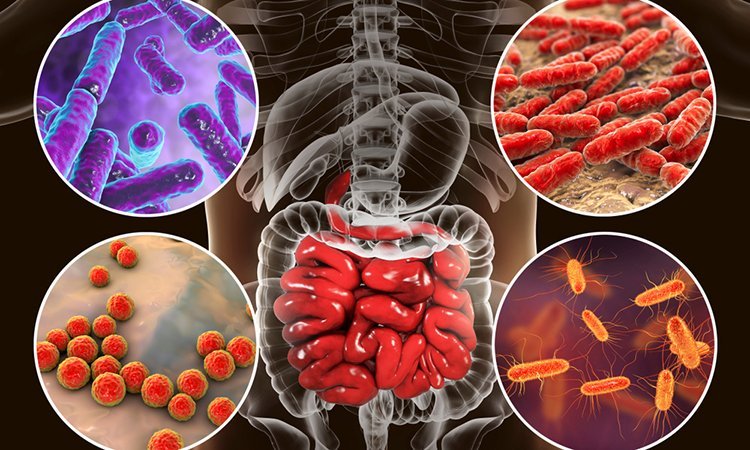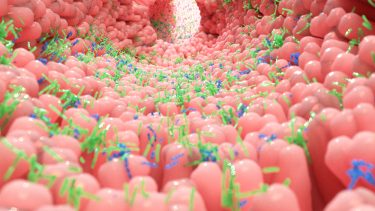Unlocking the power of the microbiome in life sciences R&D
Posted: 23 December 2020 | Anthony Finbow (Eagle Genomics) | No comments yet
Anthony Finbow explains how applying microbiome-based evidence to disease modelling will enable researchers to devise more targeted treatments.


Life sciences R&D has operated without reliable data science to support evidence of correlations between a pharmaceutical product and the microbiome of the recipient; which in turn has a bearing on immune responses, allergic responses and more. Now, there is a growing acknowledgement of the role of the microbiome when modelling disease, wellness and the impact of therapeutics.
Arguably, the human microbiome and the wider planetary microbial ecosystem have taken a hard hit over the last 50 years. Intensive farming, an overuse of chemicals in the soil, antibiotics in the food chain and a preference for convenience and processed foods have left even the richest nations under-nourished, which is having a detrimental effect on public health. The impact can be seen in the rise in diabetes, asthma and other long-term health issues across large populations. Reversing these negative consequences requires an appreciation of what has gone wrong, as well as an understanding of how to put matters right. This demands an understanding of the workings of the microbiome.
Stimulated by COVID-19, stakeholders from across multiple sectors have recommitted their focus to wellness and the notions of ‘food as medicine’ and ‘bugs as drugs’ (for example, pre- and pro-biotics).
Focus on genetics
While influencing human genetics can take generations to have an impact, the opportunity to continuously improve the human microbiome and produce positive health outcomes is thought to be substantial. Particularly now with COVID-19, there is an intense focus on microorganisms and how people can stay healthy and combat the coronavirus. There is growing thinking that the damage to cells from SARS-CoV-2 enables other bacteria to get a better foothold.


However, before any of this can happen, even the most ambitious organisations need to be able to analyse and understand the microbiome – something which has been almost impossible until now.
Microbiome science has lagged behind other fields because there has been no real way to combine all of the complex and disparate datasets and cross-compare them to produce reliable conclusions about the interplay of different medicinal ingredients or nutritional elements on a person’s microbiology.
Supporting advances in immunopharmacology
This advanced, multi-dimensional data science capability is critical to support advances in immunopharmacology – ie, working with the microbiome or improving its health, to produce better patient outcomes. Trailblazers such as Finch Therapeutics, Microbiotica and Seres Therapeutics are among the innovative therapeutics companies working to develop products in this area – for example using microorganisms as the primary mode of addressing gut disorders. More generally, there are numerous pharma companies that want to understand the role of the microbiome in metabolising drugs and determining their efficacy.
…there is a growing acknowledgement of the role of the microbiome when modelling disease”
To support their endeavours and provide scientific evidence in support of their products, R&D innovators need to apply microbiome science to their investigations and developments. The ability to do this will enable more ‘stratified’ therapeutics – the ability to target treatments more specifically at a certain category of patient.
Technologically, scientists are at a critical point now with microbiome discovery. Previously, the infrastructure was not established to allow reliable signals to be detected and move knowledge forward, but this situation is changing rapidly.
There is growing agreement that network science (by which we mean understanding broader biological interactions fully) will be the foundation for life sciences in the future. This involves being able to explore data in a more connected way, which is becoming possible now by using the latest multi-dimensional data analytics and knowledge discovery, all powered in the cloud and advancing artificial intelligence (AI) technologies.
Insight from big data
We have got to a point where it is possible for companies to access the massive scale of computing and apply sophisticated analytics to complex datasets and constellations of data, to derive correlations and explore causal relationships – employing AI to distil meaningful insights from this big data.
There are still some practical hurdles to overcome, for example around data standardisation. Yet, advances in so-called graph databases (which map relationships between diverse datasets), AI-based analytics and the mainstream accessibility of powerful computer processing are allowing life sciences R&D organisations to distil new, credible scientific evidence about their products’ interactions with the microbiome to help advance product innovation.
Within the next decade, as more is done to standardise the metadata that describes scientific data so it can be combined and cross-analysed reliably, we can expect to achieve a much deeper understanding of the microbiome.


An extended digital ecosystem for microbiome research is key. Once life sciences innovators can combine their own findings with external data from sources such as the European Bioinformatics Institute, this could help their endeavours by promoting a deeper understanding of the role of the microbiome in the performance of their products. More distributed analysis and connective learning will enable companies to make bigger strides forward.
Investment in data standardisation will enable pharma researchers to query billions of available data combinations to find specific information to support scientific discovery. This will help life sciences leaders continue the momentum of meeting the COVID-19 health challenge at speed and accelerate improved health outcomes for a wide range of conditions in 2021 and beyond.
About the author
Anthony Finbow is Chief Executive Officer at Eagle Genomics, headquartered in Cambridge, UK.
References
- [Internet]. 2020 [cited 17 December 2020]. Available from: https://www.mckinsey.com/industries/pharmaceuticals-and-medical-products/our-insights/the-bio-revolution-innovations-transforming-economies-societies-and-our-lives#
Related topics
Big Data, Disease research, Drug Development, Drug Targets, Immunotherapy, Metabolomics, Microbiome, Research & Development
Related organisations
Finch Therapeutics, Microbiotica, Seres Therapeutics


